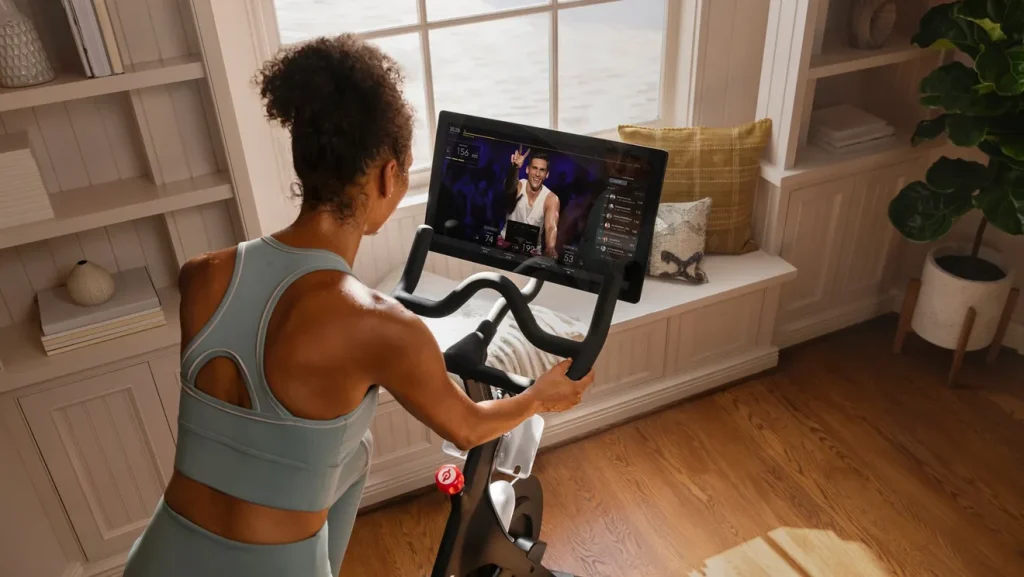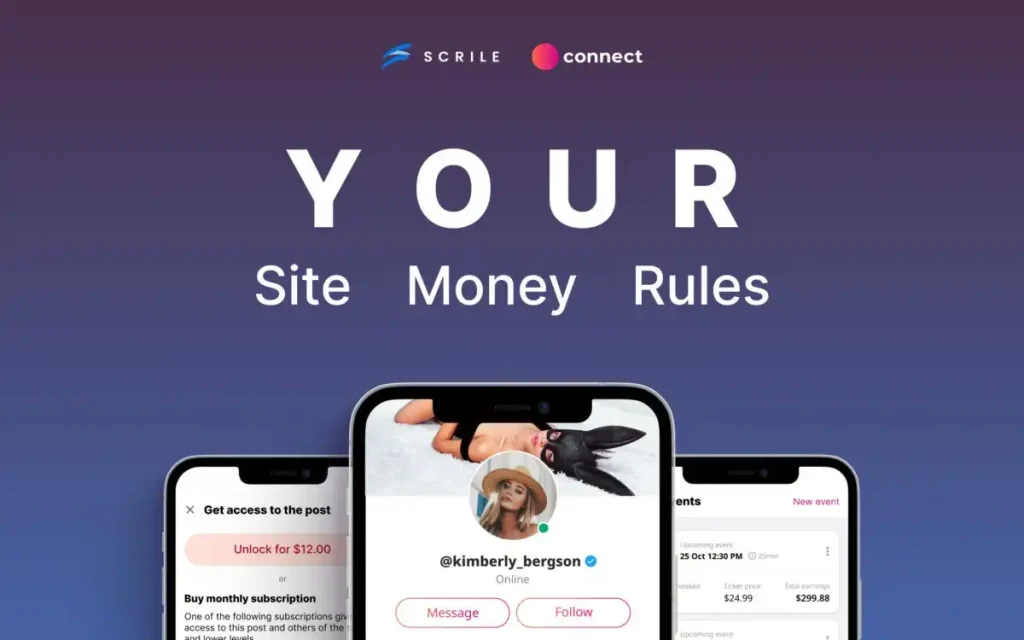It’s no secret that fitness has evolved from being a solo pursuit to a communal experience. Once upon a time, working out meant a solitary session at the gym or an early morning run, disconnected from the world around you. Today, we see an entirely different landscape. One where fitness enthusiasts of all levels are part of something bigger—a fitness community. And it’s not just a trend; it’s a movement.

Here’s the thing: people crave connection. The human brain is wired for social interaction, and when you bring that into fitness, it becomes a game-changer. Imagine pushing yourself to do one more rep because your online fitness group is cheering you on, or sticking with a morning routine because a friend from across the globe is doing it at the same time. That sense of belonging and shared experience is a powerful motivator. You don’t just lift weights—you lift each other.
The growth of online fitness communities, particularly in the wake of recent global shifts, has skyrocketed. According to Global Market Insights, the global fitness app market is projected to reach $14.7 billion by 2027. A big chunk of that growth comes from people choosing to sweat together—even if they’re miles apart.
Research shows that being part of a fitness community increases your chances of sticking with a fitness routine by 65%. People thrive when they feel accountable, supported, and, let’s be honest, when a bit of healthy competition kicks in. And that’s the magic of social fitness apps. They turn working out into a social experience, making it less about the grind and more about the journey.
How Connection Fuels Motivation

Fitness used to be a lonely pursuit. The traditional image of working out was often one of solitude—someone running on a treadmill with headphones on, or lifting weights at the gym with little interaction. But something shifted over the past decade, and it’s not just about technology. It’s about how we, as humans, fundamentally changed the way we approach fitness.
People realized that fitness, like many other pursuits, is more sustainable when done together. It’s the difference between dragging yourself to the gym alone and feeling that jolt of energy when you know someone is waiting for you, whether in person or virtually. This is where fitness communities come in—they turn what used to be a solitary grind into a shared journey.
Fitness communities, especially online, have revolutionized how we work out. Whether it’s CrossFit, Peloton, or a local running group, the underlying theme is the same: connection fuels progress. Fitness becomes less about individual willpower and more about collective momentum. You’re not just working on yourself; you’re part of something bigger.
The Science Behind Community-Based Fitness Success
Let’s talk numbers, because this isn’t just about warm and fuzzy feelings. The research backs it up: being part of a fitness community dramatically improves both adherence and outcomes. A study from the American Journal of Health Promotion found that people who engage in group fitness activities are 25% more likely to maintain their fitness goals than those who go it alone. The key? Accountability and social support.

In a fitness community, accountability isn’t just internal; it’s external too. If you’ve ever felt the pang of guilt for skipping a workout because a friend texted you to ask where you were, you’ve experienced it firsthand. According to a survey by the Journal of Medical Internet Research, 95% of participants in online fitness groups reported feeling more motivated and accountable when they shared their goals with others.
But it’s not just about sticking to the plan. The real benefit lies in the level of commitment and effort people put into their workouts when they’re part of a community. The same American Journal of Health Promotion study found that individuals in group settings push themselves harder during workouts—there’s a sense of camaraderie and friendly competition that encourages people to stretch beyond their usual limits.
These numbers tell a simple truth: people are more likely to stick to their fitness routines and push themselves harder when they feel connected to others. And social fitness apps—where connection is the foundation—are making this easier than ever before.
The Role of Technology in Building Online Fitness Community
When people think about fitness, they often focus on physical effort—burning calories, building muscle, improving endurance. But in the digital age, fitness is as much about technology as it is about sweat. Social fitness apps have emerged as the perfect intersection of tech and wellness, creating dynamic, engaging platforms where people can not only work out but connect with others. In fact, the future of fitness isn’t just personal—it’s social.

Consider the rapid rise of apps like Peloton and Strava. What’s made them so successful isn’t just their innovative approach to delivering workouts. It’s the way they’ve built community into the core of their platforms. Through these apps, people who once worked out alone now join virtual running clubs. They track progress with friends, and participate in global challenges. All from their smartphones. The message is clear: people want to be part of something bigger than themselves, and technology makes it possible.
The power of social fitness apps lies in their ability to bridge the gap between individual fitness goals and collective experience. You can log in to your app and instantly join a live workout with hundreds of others. Share your achievements on a community feed, or engage in one-on-one messaging with your accountability partner. It’s not just about moving—it’s about moving together. And when tech makes that seamless, it’s no surprise that fitness communities flourish.
Real-Time Feedback, Gamification, and Accountability
So, what exactly makes social fitness apps so effective at keeping people engaged? It’s more than just the workouts themselves—it’s the built-in features designed to enhance motivation, accountability, and a sense of achievement. Three key elements stand out: real-time feedback, gamification, and social accountability.
Real-Time Feedback
First, real-time feedback changes the game. Imagine you’re in a live virtual class, and the instructor calls out your name as you push through that last set, or your app notifies you that you’ve just hit a personal best. This immediate recognition taps into our innate desire for validation and keeps us engaged. Research published by Nature Human Behaviour shows that immediate feedback during workouts can improve performance by up to 25%. Whether it’s through live classes, leaderboards, or instant messages, social fitness apps leverage real-time feedback to keep users motivated.
Then there’s gamification.
Fitness apps are no longer just tools for tracking workouts—they’re interactive experiences designed to make fitness fun. Challenges, rewards, badges, and leaderboards tap into users’ competitive spirit and turn fitness into a game. Strava, for instance, lets users compete on segments of a run or bike ride, giving them the incentive to beat others or improve their own records. According to The Journal of Internet Medical Research, 81% of users report feeling more motivated when fitness apps incorporate gamified elements. This isn’t just an add-on; it’s a core feature that drives engagement.
And social accountability
Finally, social accountability is the secret sauce. It’s one thing to skip a workout when no one knows, but it’s another when your entire fitness community is tracking your progress. Social fitness apps build accountability into the system. Whether it’s a friend nudging you to complete today’s workout or a team-based challenge where you’re working towards a shared goal, knowing that others are counting on you makes skipping that workout a lot harder.
These elements—real-time feedback, gamification, and accountability—aren’t just features; they’re powerful psychological tools that keep users coming back. And in a world where maintaining fitness routines is a challenge, these features are why social fitness apps are the future of wellness.
Social Workouts: Fitness Is Better With Friends
If there’s one thing that modern fitness apps have proven, it’s this: working out with others, even virtually, is far more motivating than sweating it out alone. Social workouts should be at the heart of any successful fitness community app. This feature allows users to join group workouts, challenge each other in real-time, and even compete on leaderboards. Whether it’s a live class where participants see each other’s progress or a recorded session shared with friends, social workouts create an experience that feels collaborative rather than isolating.

Take the success of Peloton, for instance. One of the biggest draws is that users don’t feel like they’re simply working out in their living room. They feel part of a global fitness community. A survey by Statista found that 84% of Peloton users felt more motivated to exercise because of the sense of community. Your app should tap into this energy by offering live-streamed group classes, virtual workout challenges, or even team-based competitions where users can earn points together.
The beauty of social workouts lies in their flexibility: they don’t have to be restricted to scheduled times. On-demand classes where users can join a “leaderboard” with others who are doing the same workout at different times creates a continuous sense of connection. Whether it’s 6 AM or midnight, users can always feel part of a fitness group—and that’s the secret to long-term engagement.
Progress Tracking & Personalized Plans
In the age of data, fitness apps must offer more than just a community. They must provide personalized insights that empower users to achieve their goals. One of the most crucial features to include in your fitness community app is a progress tracking combined with personalized workout plans. People want to know how they’re improving, and they want a plan that fits their individual needs.
Today’s fitness apps offer far more than basic step counts or calorie tracking. They go deeper—tracking metrics like heart rate variability, sleep quality, and recovery times. Your app should allow users to set fitness goals and track key metrics, giving them a clear picture of their progress. When users see their progress in real time, they feel more motivated to keep going. It’s a psychological boost that taps into their desire for achievement.
But it’s not just about tracking data—it’s about using that data to personalize the user’s experience. Personalized plans tailored to fitness levels, goals, and even preferences are essential for keeping users engaged. No two users are the same, and your app should reflect that by offering custom workout plans, nutrition advice, or recovery routines. Fitness is no longer “one size fits all.” With AI-driven algorithms, your app can recommend workouts, adjust plans based on performance, and keep users on a path that’s tailored specifically for them.
A good example of this in action is MyFitnessPal, which uses user data to customize nutrition plans and workout routines. The result? Users who feel more invested in their journey because the app understands their unique goals. According to The Journal of Sports Sciences, 75% of fitness app users say they are more likely to stick with a program that’s personalized to their needs.
Keep Users Engaged Through Fun
Fitness shouldn’t just be a chore. That’s where gamification comes in—a feature that transforms workouts from something users “have to do” into something they “want to do.” Adding rewards, challenges, and leaderboards can turn mundane tasks into fun, competitive experiences. It’s not just about completing a workout—it’s about earning points, leveling up, and competing with friends.
Consider the success of Strava, which allows users to set personal records on running or cycling routes. Leaderboards show how users stack up against others, and challenges offer rewards like badges, prizes, or even discounts on fitness gear. These features create a sense of achievement and friendly competition that keeps users coming back.
Your app can implement similar features: virtual races, monthly challenges, and progress badges that reward consistency. By gamifying the experience, you give users a reason to stay engaged, even on days when motivation runs low. Research from MIT Sloan Management Review shows that 70% of users who engage with gamified features are more likely to return to the app regularly.
In-App Social Features: Communication Builds Community

Lastly, no fitness community app is complete without robust social features. Your users don’t just want to work out—they want to communicate, share, and encourage one another. Integrating social features such as messaging, comment threads, or even live chat during workouts fosters a deeper sense of connection.
Think of it as building a digital locker room. People often bond before or after a workout, and your app should replicate this experience. Whether it’s sharing workout results, offering encouragement, or organizing meetups, the social aspect of fitness apps is what turns users into loyal community members.
Incorporating social features also increases accountability. When users know their friends are following their progress or expecting them to show up for a workout, they’re more likely to stick to their routines. Fitness becomes a social contract, not just a solo effort.
Stories from Real Fitness Communities (e.g., mi fitness community)
The real magic of fitness communities isn’t in the technology or the sleek design of an app—it’s in the stories. Fitness communities have the power to change lives, and nowhere is this more evident than in the testimonials of people who have transformed themselves, not just physically but mentally and emotionally. Let’s dive into a real-world example: the mi fitness community.
The mi fitness community started as a small, local group of fitness enthusiasts in Michigan who wanted to stay connected during the pandemic. As gyms closed and fitness routines were disrupted, this group turned to an online platform to support one another. What began as a handful of people checking in on each other via Zoom calls quickly snowballed into a thriving online community. Now, they host daily workouts, share nutritional advice, and provide accountability in ways that no one could have predicted.
Social communication
Members of the mi fitness community consistently report improved fitness outcomes . One member shared how the group helped her regain her mental health after months of isolation. “It wasn’t just about the workouts—it was about knowing that someone was there for me, pushing me, even when I didn’t feel like showing up.” This sense of belonging is what drives the long-term success of fitness communities. And it’s something no solo workout app can replicate.
Another member spoke about the unexpected accountability that comes with being part of a fitness community. “When you know people are expecting you to show up, you show up. And it’s not just the physical part—it’s the check-ins, the chats, the support. You push yourself harder because the whole group is rooting for you.”
The mi fitness community is now expanding. They integrating social fitness apps into their routine, and allowing people from outside Michigan to join. This type of success story demonstrates how technology can take a local fitness group and transform it into a global movement, bringing people together who would otherwise never meet, all united by the same goal: getting healthier, together.
What Entrepreneurs Can Learn from These Success Stories
So, what’s the takeaway here for entrepreneurs? Simple: people don’t just want fitness—they want community. And community is a powerful driver of business growth. If you’re considering building a fitness app or platform, think about how you can replicate the core elements that make communities like mi fitness successful.
First, it’s about offering more than just a workout. People can get fitness programs anywhere, but they stick around when they feel part of something bigger than themselves. This means you need to build your app around connection, communication, and shared goals. You’re not just offering exercises—you’re offering accountability, support, and camaraderie.
Second, entrepreneurs can capitalize on the viral nature of fitness communities. When people find a community they love, they talk about it. Word of mouth is incredibly powerful in the fitness space because these communities often form tight-knit relationships. Whether it’s through social media, friend referrals, or shared content, fitness communities grow organically, often bringing in new members without needing heavy advertising.
Consider CrossFit, which exploded in popularity through grassroots communities. Early adopters were so passionate about the experience that they brought in friends, colleagues, and family members. Before long, CrossFit became a worldwide phenomenon, not because it was just a workout program, but because it created a culture and community that people wanted to be part of.
Finally, these success stories remind entrepreneurs of the importance of technology in scaling fitness communities. If a local group like mi fitness can expand through online platforms, imagine what’s possible with a dedicated social fitness app designed specifically for community-building. You’re not just selling fitness—you’re selling connection, and that’s what keeps users engaged for the long haul.
Now is the Perfect Time to Start Your Own Fitness Community App

If you’re looking for the right moment to start an online fitness community, there’s no better time than right now. The online fitness industry has exploded in recent years, driven by a mix of technological advancements, changing consumer behavior, and global health trends. According to Statista, the online fitness market was valued at $6 billion in 2020, and it’s projected to reach a staggering $59 billion by 2027. That’s nearly a tenfold increase in less than a decade. You don’t need to be an economist to see that this kind of growth doesn’t happen by accident. It’s the result of significant shifts in how people engage with fitness.
Let’s break down why this market is booming. First, there’s the obvious impact of the COVID-19 pandemic. Gyms around the world closed, forcing millions to turn to online alternatives. But here’s what’s interesting—many people didn’t go back to their old habits once things reopened. Why? Convenience. Online fitness offers flexibility that a traditional gym never can. You can work out anytime, anywhere. Whether it’s a 5 AM session before the kids wake up, or a late-night workout after a long day of meetings, online fitness adapts to your schedule. Not the other way around.
Social fitness app benefits
Moreover, people have realized that they don’t need expensive gym memberships or personal trainers to get results. With the right app and a supportive community, fitness is more accessible than ever. This has opened up the market to entirely new demographics—people who might have been intimidated by the gym. Or who live in rural areas without access to traditional fitness facilities.
But beyond convenience, there’s a deeper reason why online fitness is thriving: community. Social fitness apps have tapped into the psychological need for connection. In a world where we’re increasingly disconnected, especially after the isolation of the pandemic, fitness communities offer a way for people to bond over shared goals. It’s not just about getting fit—it’s about doing it together. And as any entrepreneur knows, businesses that solve real, human needs tend to do well.
So, when you look at the numbers, it’s clear that this is a market on an upward trajectory. Whether you’re building for the mi fitness community or launching a brand-new app, you’re entering an industry with huge growth potential.
Lessons from Early Adopters
When you see an industry growing as fast as this one, the smart move is to look at the people who got in early and made it big. One of the most famous examples is Peloton, which transformed from a niche cycling app to a billion-dollar brand. What did Peloton understand early on? That people don’t just want fitness—they want connection. By building live classes, leaderboards, and real-time interaction into their platform, Peloton didn’t just create a fitness app—they built a global community. And people were willing to pay a premium for it.
Another case study is Strava, a social platform for runners and cyclists. Strava didn’t start by offering the best workouts or training plans; instead, they focused on building a community where users could track their progress, compete with friends, and share their achievements. By turning fitness into a social experience, Strava grew organically. Users invited their friends, and the app’s viral nature fueled its growth.
Tips from Entrepreneurs
What can entrepreneurs learn from these early adopters? Three key lessons:
- Focus on Community First, Fitness Second: The most successful fitness apps didn’t just offer great workouts. They built communities where users felt connected, supported, and accountable. You don’t have to reinvent the wheel—people have been getting fit for centuries. But what you can do is create an environment where people want to come back, not just for the exercise, but for the relationships they’ve formed.
- Leverage Technology to Scale: Early adopters like Peloton and Strava scaled quickly because they leveraged technology to create seamless user experiences. Live classes, personalized progress tracking, and real-time feedback are all features that keep users engaged. These are the types of features that make people feel like they’re part of something bigger, even if they’re working out alone in their living room.
- Create a Business Model That Encourages Long-Term Engagement: It’s not enough to get users to download your app—you need them to stick around. Subscription models, in-app purchases, and exclusive content are all strategies that have worked for the biggest players in the industry. But at the core of long-term engagement is value. If your app continuously provides value through personalized workouts, social interaction, and community support, users will keep coming back.
The fitness market is moving quickly, but there’s still room for new players—especially those who focus on building communities. With Scrile Connect, you have all the tools you need to launch your own online fitness community. Whether you’re an entrepreneur looking to tap into this booming industry or a fitness professional wanting to expand your reach, now is the perfect time to get started.
Build Your Own Fitness Community with Scrile Connect

The fitness industry is at a pivotal moment. As we’ve seen, the rise of online fitness communities isn’t just a trend—it’s a seismic shift in how people connect, stay motivated, and achieve their goals. With market growth accelerating and early adopters like Peloton and Strava paving the way, the opportunity to launch your own fitness community has never been more accessible or promising.
The truth is, people don’t just want fitness programs—they want community, accountability, and belonging. That’s where Scrile Connect comes in. With Scrile Connect, you have everything you need to create a thriving online fitness community tailored to your niche. Whether you’re a fitness entrepreneur, a personal trainer, or simply someone passionate about helping others get in shape, Scrile Connect provides the tools to build, grow, and monetize your community.
And here’s the best part: you can start building your fitness community risk-free. Sign up for a 14-day free trial of Scrile Connect and experience firsthand how our platform can transform your vision into reality. Don’t wait for the perfect moment—seize it now.
It’s not about waiting for the perfect moment. The perfect moment is now.
